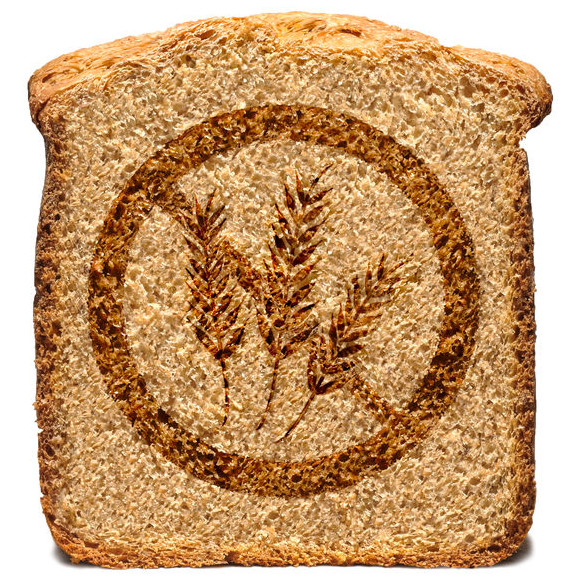
Gluten-free Certification
What is Gluten-free Certification?
Gluten-free certification is a document which indicates the successful meeting and implementation of a certain set of criteria established by a third-party certification (TPC) agency/body regarding the manufacture of “free-from-gluten-products.”
The process involves the completion of a series of plant audits and laboratory data analysis. An internationally-recognized certificate is granted to the manufacturer as proof that conditions and/or requirements for the production of gluten-free products have been met.
Origin
The demand for “gluten free” cereal- and grain-based food products has grown dramatically over the past few years. One of the main drivers for this trend is the increase in the number of people diagnosed with gluten intolerance, gluten allergy or celiac disease (the most dangerous health condition).1
Gluten-free certifications started with the Gluten-Free Certification Organization (GFCO), a voluntary program originally developed in Canada in 2005 by the Gluten Intolerance Group (GIG). The GFCO is currently the largest and fastest growing gluten-free certification organization in North America, certifying thousands of products in the U.S. alone.2
The GFCO requires a maximum of 10 ppm gluten in a food product which is stricter than the FDA requirement for gluten free (under 20 ppm, also published by the Codex Alimentarius, CODEX STAN 118). The 20 ppm level, though, remains the level of the international standard. The Celiac Sprue Association (CSA) Seal of Recognition calls for less than 5 ppm gluten.1
How does it work?
A gluten-free certification is based on an assessment through on-site plant inspection of GMP’s prerequisite programs (e.g allergen control, cleaning, cleaning validation, gluten testing in finished product, segregation policies, supplier control, labeling), and food safety management systems (e.g. HACCP). More specifically, it looks at the gluten-free management system that focuses on preventing the production and subsequent distribution of products containing the allergen, gluten, through the food chain.1,3
Gluten-free definition
According to the Codex Alimentarius, “gluten-free” foods have two basic definitions:
- Source-focused: Food that consists of (or is made) only from 1 or more ingredients which DO NOT contain wheat (Triticum aestivum), ancient wheats (e.g. einkorn, spelt, emmer or farro, khorasan or Kamut®), durum wheat (Triticum durum), rye, oats, barley, spelt or a crossbred hybrid (e.g. triticale); and the gluten level does not exceed 20 mg per kg of product (based on the food as sold or distributed to the consumer).
- Process-focused: Food that consists of (or is made) only from 1 or more ingredients which DO NOT contain ANY of the cereal sources mentioned above and which has been specially processed to remove gluten, and the gluten level does not exceed 20 mg per kg of product (based on the food as sold or distributed to the consumer).
“Very low gluten” definition
According to the Codex Alimentarius and European regulations, the claim “very low gluten” can only be made when the food contains no more than 100 ppm gluten. In this case, the food containing cereal ingredients has been specially processed to reduce the level of gluten.4
Application
Gluten-free certification is essential to consumers with gluten-related conditions. It allows them to assess the safety of a given product with confidence. Such consumers are extremely careful when it comes to reading labels at the grocery store. Various reports have highlighted the adverse effects of ingesting even minute amounts of gluten.1,5
Steps required for a gluten-free certification include:5
- Completion of an application form with a gluten-free certifying agency, providing details about all products and facilities considered for certification.
- Conducting a gap audit in preparation for an on-site audit.
- On-site plant inspection conducted by the certifying agency at the manufacturer’s expense.
- Correction of any issues and non-conformities identified during the audit.
- Meeting all requirements established and obtention of the permission to use certification logo or seal on label/packaging.
- Maintaining the integrity of the certification by scheduling an annual facility audit and submitting gluten analysis results as agreed with the agency (this for renewal purposes).
Gluten-free certification bodies
Several organizations have the capabilities, accreditation, trained professionals, expertise and specialized equipment to perform certification exercises for gluten-free products. To name a few, the following certification agencies offer this service to the food industry, retail and restaurant industries:
- The Gluten Free Certification Program (GFCP) by the Allergen Control Group (ACG)
- Gluten-free Certification Organization by Gluten Intolerance Group
- SGS (Société Générale de Surveillance)
References
- Beverly, R.L. “Cereals and Derived Products.” Encyclopedia of Food Safety, Volume 3 Foods, Materials, Technologies and Risks, Academic Press, Elsevier, Inc., 2014, pp. 309–314.
- De Rovira, D. “C.” Dictionary of Flavors, 3rd edition, John Wiley & Sons Ltd, 2017, p. 56.
- Crevel, R., and Cochrane, S. “Allergens.” Food Safety Management. A Practical Guide for the Food Industry, Academic Press, Elsevier, Inc., 2014, pp. 59–81.
- Institute of Food Science and Technology. “Food Toxins, Allergens and Risk Assessment.” Food & Drink – Good Manufacturing Practice. A Guide to its Responsible Management, 7th edition, John Wiley & Sons Ltd (UK), 2018, pp. 63–73.
- Casper, J.L., and Atwell, W.A. “Gluten-Free Best Practices, Regulations, and Labeling.” Gluten-Free Baked Products, Cereals & Grains Association, AACC International, Inc., 2014, pp. 77–84.

